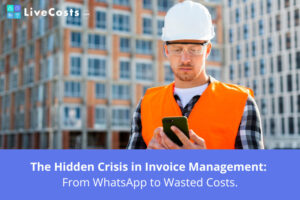In a recent survey by KPMG, they found that just 31% of projects came within 10% of budget and just 25% within 10% of original deadlines in the past three years. Pretty shocking figure really. In our recent blog 5 Steps for a Successful Construction Project Budget we discussed methods of setting up an initial budget correctly but how can we keep it on track when the project is active?
Let’s take a look at some of the key areas to monitor
Use Project Accounting Methods
Unlike traditional accounting, project accounting measures the financial performance of specific projects. It requires collecting key data throughout a project, such as time and expense information. Project accounting provides real-time data, giving firms the financial insights they need to thrive. In many cases, small decisions at key times can have a big impact on staying within a project budget.
Establish Phase Budgets
Measure your financial performance regularly by breaking your projects total construction budget into shorter intervals or bodies of work (phases). By tracking all incoming project expenses against these phase budgets, over runs can be caught earlier, giving you an opportunity to try and recoup as the project progresses.
Manage Scope Creep
With the initial phase budgets set now it’s time to manage it. Changes on a project are unavoidable but scope creep refers to uncontrolled growth or changes in the scope of a project. Establish a known company communication process and ensure your team are very skilled in this area. This is essential for adjusting budgets and a clear communication channel can keep the project moving forward.
Track Staff Time
In most construction companies, your team is your most valuable asset. It is difficult to know how profitable projects are without knowing where their time is allocated. Again, allocating time to smaller phase budgets will give you great data when a similar task shows up again on another project.
With the right software, time tracking is nearly effortless. After implementing practices for tracking time, many companies discover that seemingly profitable phases are not. Tracking staff time is often a missing ingredient in creating realistic project budgets.
Monitor Spend
Clearly define a Purchasing Process and ensure all staff are educated. Material price fluctuation is a huge issue at the moment, do all materials orders over a certain value require an RFQ? A well defined purchase order system will track all spends and apply the costs to the phase budgets in real time.
Have a Project Post Mortem
A good idea for any company is analysing what worked and what didn’t after the fact. This process will give you insight not only for this project but for future ones too. This knowledge will be especially helpful if you intend to do additional work with the same team, client, and project manager. Again, breaking this action into phases or milestones can be especially useful.



